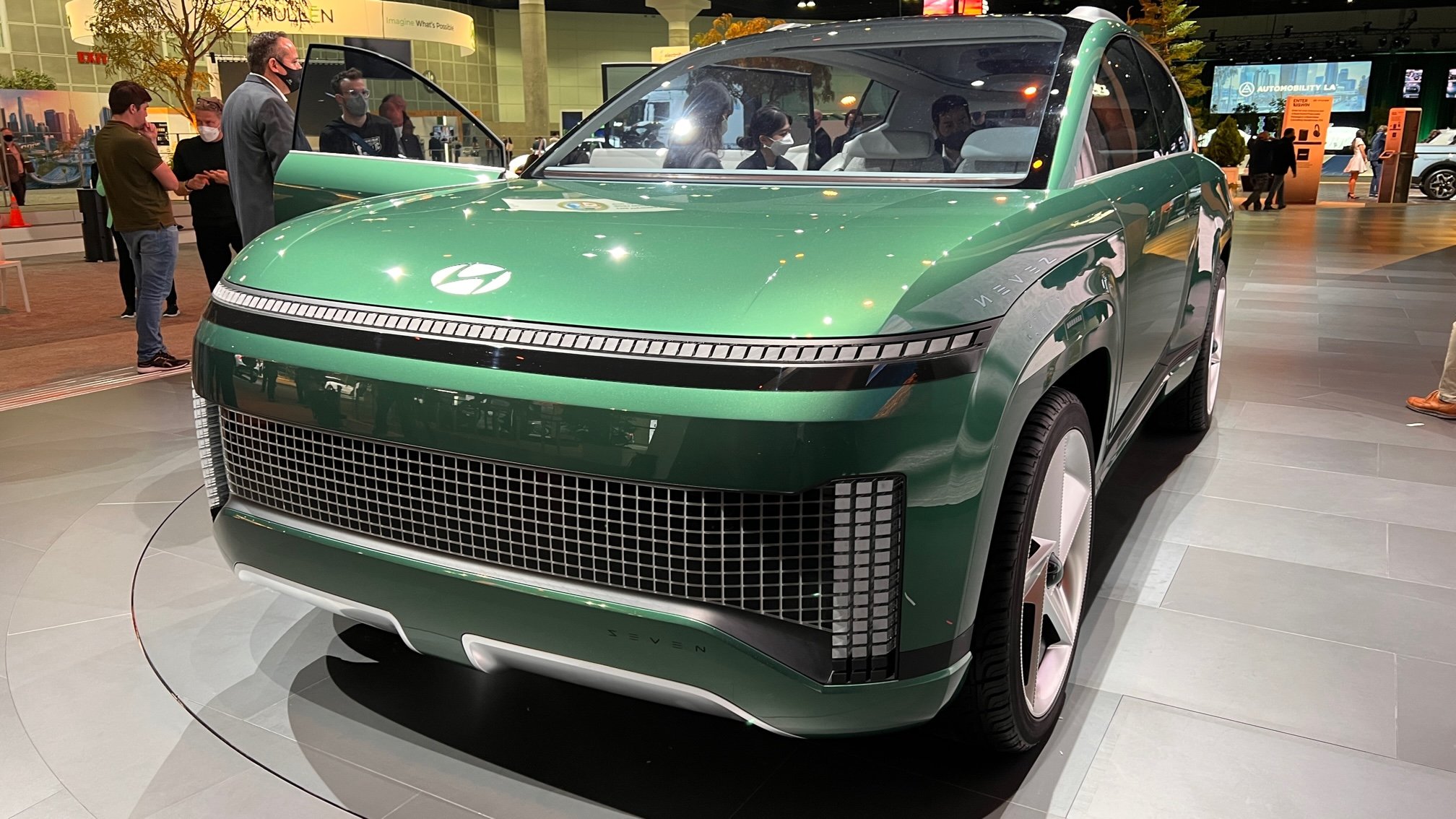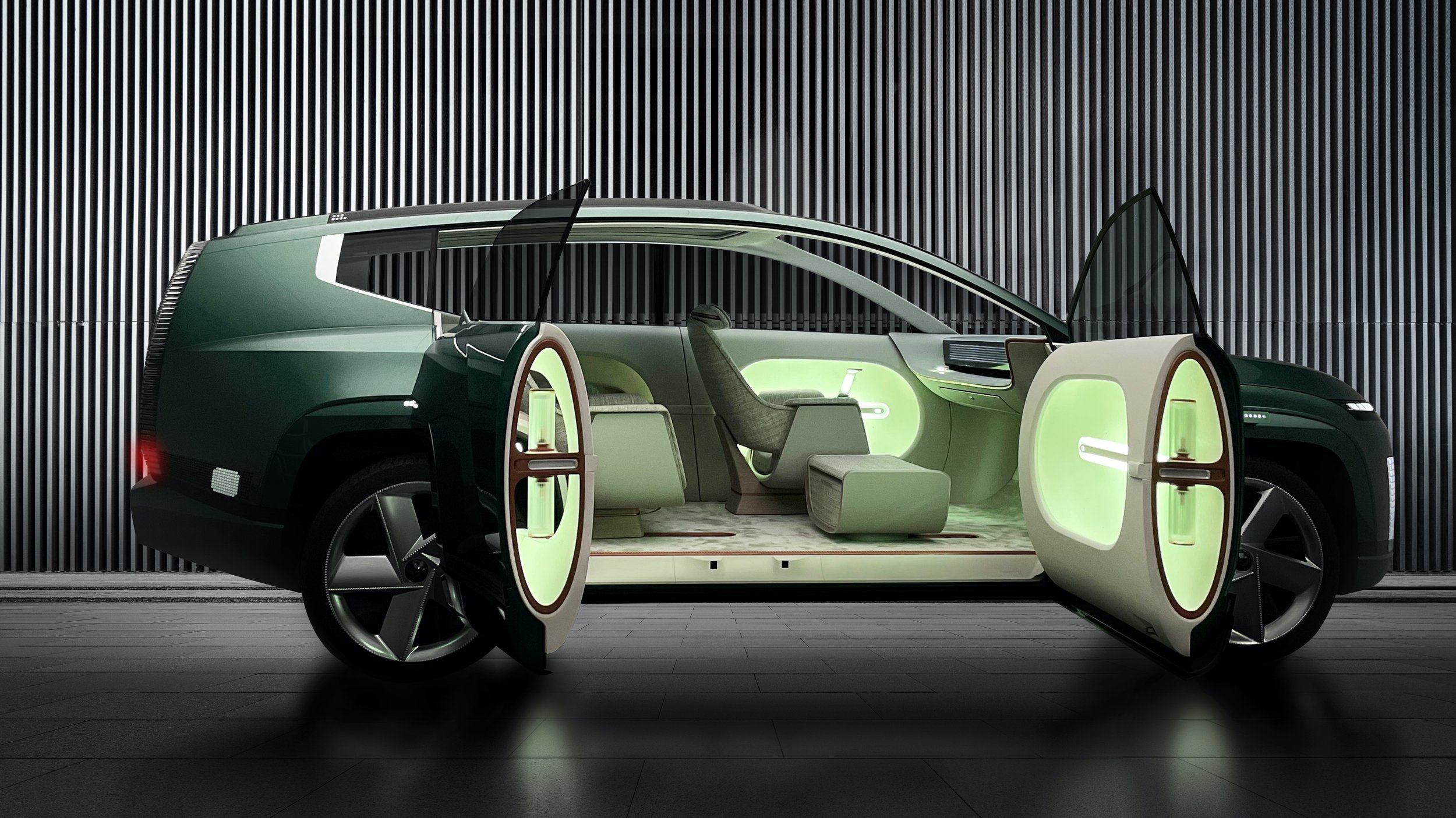Magnificent Seven – Hyundai’s plush NZ-bound electric SUV
/Massive electric sports utility sister ship to Ioniq 5 is fully revealed.
THE next big – and possibly biggest – thing on the Hyundai electric car platform already being shared with Kiwis has been revealed in full.
The Seven that is a star of the Los Angeles motor show is still being displayed in concept form, and while some of the more radical elements are not destined for the street, there’s good chance the design study is still a broadly accurate representation of the production version set to become available here as early as 2024. Might it represent as a modern age replacement for the Palisade, at the moment the Hyundai heaviest hit for CO2 fines under incoming national clean air legislation?
Determined as a large, long-range car, the Seven sits atop the E-GMP fully electric platform already used by the Ioniq 5 that is on sale in New Zealand and a sportier looking Ioniq 6 sister ship coming within the next 24 months. A Kia concept, called EV9, also shown at LA is also related, to the point where it shares components with the Seven.
Confidence that what we see here from Hyundai is by and large what we will get in showroom form is fuelled by the Five and the Six having been largely faithful to their own concept precursors, respectively called the 45 and the Prophecy.
Hyundai today described the concept for its third E-GMP model as a “category-bending” SUV, highlighting its aerodynamically optimised styling and extended wheelbase as departures from the design norms of conventionally fuelled contemporaries. They’re right about that – the car is highly individualised.
An obvious visual link with the Five and the Six is the 'Parametric Pixel' design for the front and rear light clusters.
Like its sister models, the Seven benefits from a flat floor, short overhangs and bonnet, and a 3200mm-long wheelbase; all allowing for a far more spacious cabin environment than offered by Hyundai's existing sportys utilities.
Overseas’ media say the production-spec Ioniq 7 is more likely to have a conventional three-row seating layout in favour of the concept’s astounding layout, comprising a pair of movable, swivelling armchairs – complete with footrests – and a curved corner sofa-style arrangement at the back of the cabin. With the front seats turned rearwards, the Seven is transformed into a mobile lounge, with ambient lighting supplied by distinctive tube-shaped devices in the door panels, an inbuilt fridge and even dedicated shoe care compartments.
The design study’s swank cabin might be entertained in a self-driving age, Hyundai suggests. It says the layout is integral to its “future vision of autonomous mobility”, which previews how advances in self-driving capability could influence the interiors of upcoming models.
That ethos is also imprinted with the study having a retractable joystick in place of a steering wheel and, in place of a conventional dashboard, a sleek digital control panel spanning the width of the cabin. A massive OLED screen in the ceiling serves as a sort of virtual sunroof with customisable displays.
The Seven reflects Hyundai's sustainability thoughts by having a 'bio-paint' exterior finish, recycled interior materials and a focus on hygiene. With the latter, an aircraft-inspired airflow system operates either horizontally or vertically to reduce cross-contamination between passengers, and once the vehicle is empty, UV lights run over all surfaces to eradicate bacteria and viruses.
Like the Ioniq 5, the car has 800V charging functionality will make it compatible with the fastest EV chargers on the market. Hyundai says it could optimally charge from 10 percent to 80 percent is less than half an hour.
Hyundai is targeting a range of more than 500 kilometres.
When releasing the Ioniq 5 this year, Hyundai NZ asserted it is planning to take the Ioniq 6 and the Ioniq 7 to fill out its E-GMP offering here.






















